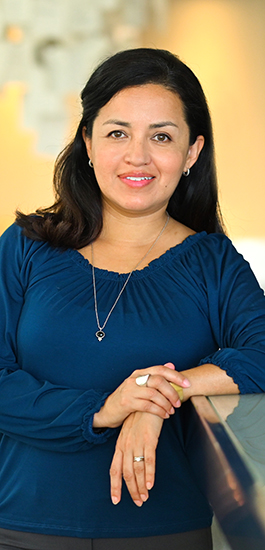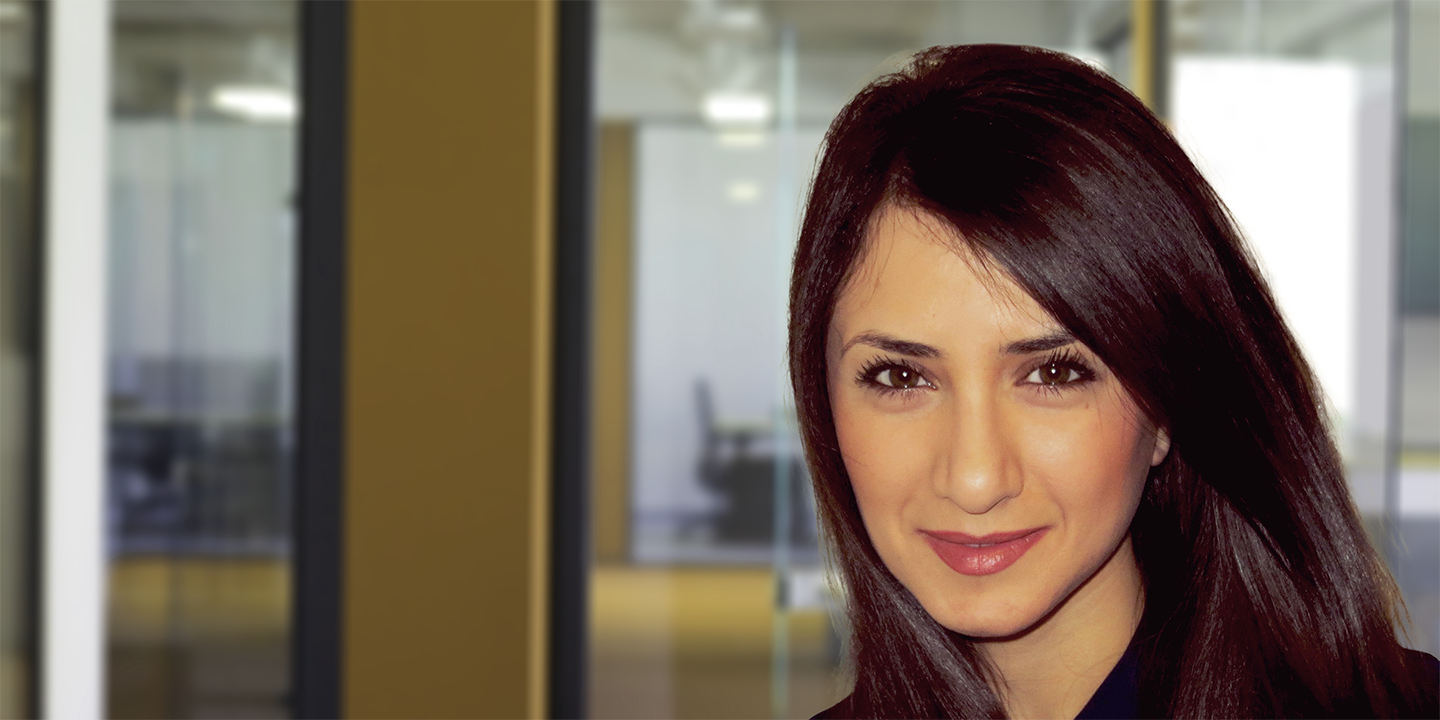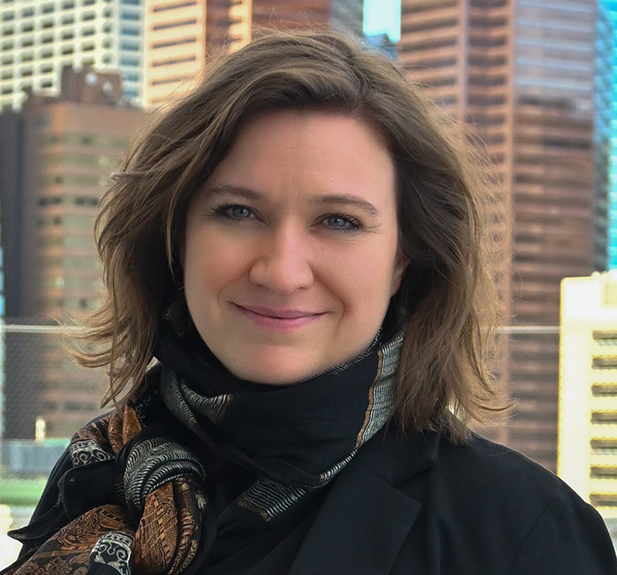Introduction
At Kasian, we are proud of the diverse skills and deep sector experience that our various team members bring to our projects and overall community. It is this diversity that empowers us to create a deeper connection between people and place, in turn transforming not only landscapes and buildings, but communities.
Our employee Spotlights serve to introduce some of our high impact and passionate team members, highlight their unique skills, and share their reflections on how design trends are evolving in our changing times.
Spotlight: Jennifer Simpson, Senior Interior Designer
“The most meaningful part of every project is seeing the positive impact good design has on the people who live, work, and play in the space.”
Jennifer Simpson has had a passion for art and design that dates back to her childhood, a passion that she has parlayed into a rich and diverse career in interior design. Initially working in the office furniture sector out of design school, she then moved into corporate office design. Given the number of hours in a day that employees spend in these corporate spaces, Jennifer began exploring ways to make these spaces as healthy and inspiring as possible – which led to her obtaining the WELL Accredited Professional (AP) credential in 2017.
The WELL AP is a health and well-being credential that demonstrates a commitment to advancing human health in buildings and communities through science-backed strategies. Jennifer has brought this dedication to creating healthier and safer spaces to a variety of projects, ranging from senior living to public sector to educational institutional environments.
Jennifer shares some insights on her design journey.
Question & Answer
Q: Can you tell us about a particular meaningful or interesting project that you’ve had the opportunity to work on?
JS: I designed a training facility once for a corporation. As part of the design there was this big, open, flexible space outside of the training rooms. I had a meeting at the space and noticed the furniture seemed to be in a bit of disarray. At another point I visited and there was a group of people training in that space, which underscored for me how important that space was, they were adapting it to what they needed as a breakout space, and it was getting good use. As designers, everything is neatly placed, but that’s not how people live and work. Looking back, it was a great lesson to observe and reflect on how people use the spaces we design.
Red Crow Community College has been a more recent project that I’ve been privileged to be involved with. I was added at the end of design development and the impact has been tremendous, it’s given me the opportunity to work with a group of individuals who really need something. It’s been amazing to see the strong community that has built up around this really important project. We’ve worked closely with people from the Blackfoot nation, and with Indigenous artists. The art is amazing and the whole college is just rich with history.
Q: What areas of the field are you most passionate about?
My first job out of design school was in office furniture, which eventually evolved into corporate office design. We can spend up to 80% of our day at work, our workplaces need to support healthy and inspiring spaces. The impact that the built environment has on the health and wellness of the occupant is incredible and understanding this instills a change in how you view your designs. That’s why in 2017 I became a WELL-AP.
Although my focus for many years was on corporate design, I recognized that not everyone works in a corporate office. They work in many environments from schools to seniors’ communities. And these spaces require the same level of design thinking. Through my work at Kasian, I have enjoyed getting to explore the work environment in other sectors.
Q: You’ve recently done some work in the Senior Living space. Can you speak to what appeals to you about this type of work and what innovations you are seeing in this area?
JS: I was brought in on phase four of five on the Silvera Spruce Lodge project. Silvera is a not-for-profit Calgary organization that provides housing in different stages of care, and phase four was focused on upgrading the Spruce Lodges’ interiors. What I really loved – here again, we have a workplace and it’s also someone’s home. The units themselves are fairly small, maybe the size of a hotel suite. There are no kitchens, so all those common areas that I helped to renovate are spaces that are truly important. The residents really live in these areas and they need them to be warm and inviting as well as functional.
One of the last things we did was selecting artwork to be hung throughout the building. With the client, we chose images of the surrounding landscape and aligned these photos with their positioning in the building. So, on the west side of the building, there were photos of the mountains and the landscape one would find to the west of Calgary. To the east of the building, we hung photos of prairies and farmland and grain elevators.
We heard lots of comments from residents to the effect of ‘I know where that is,’ ‘I have fond memories of that spot,’ ‘I went there as a kid’. I love seeing the impact on the people I am designing for.
It’s also been interesting working with the Kasian team on developing a new way of thinking about long-term care. In working with a long-term care dementia facility, it’s apparent there is a change afoot in how we look at dementia and long-term care. Moving from these highly sterile environments to something that is more in line with a small home mode, where 10 -12 residents can share a common area that allows them to keep on with whatever portion of their life they are able to keep on with, whether that is doing laundry, making themselves a cup of tea, or washing their tea cup.
Q: Can you share a time where you faced a major barrier or challenge in your career?
JS: COVID was that challenge, for sure, along with the move to remote work. I had always been skeptical that architecture and design firms could work effectively remotely. The pandemic proved that we could still provide the same high-quality level of design while working from home. We came through COVID with this new knowledge around how we work, the whole idea of an activity-based work environment, and this now influences design decisions moving forward.
Q: Speaking of COVID, are there any design-specific considerations that you think will be top of mind as we move forward from the pandemic?
JS: I started my WELL AP journey before the pandemic, but in light of what we went through in the last two and a half years, I feel it’s really important to understand the impact of COVID to our built environment.
My design thinking is something that’s really important to me. For example, how do we design an interior space where you don’t have degradation because of our (now) rampant cleaning protocols from COVID, like the hand sanitizer that everyone uses all over the place. You can walk into any grocery store and see locations below those hand sanitizers or on the carts themselves where that stuff is starting to eat away at the finish of either the wall or the cart itself. Those small things will have an impact on our health in different ways. So, the more I observe and learn, the more I can plan my designs so that we alleviate some of those problems.
Q: Have you had any mentors along the way, and can you share your thoughts on what makes for a great mentor?
JS: I have been fortunate throughout my career to have worked with and learned from several inspiring designers and architects. The most valuable lesson I have learned is how important it is to listen to our clients and really hear them, and this is front and centre for me every time I start on a new project. The key to being a great mentor is to provide honest feedback, and as a mentee, you’ll get the most out of the relationship by being open to listening to constructive criticism.
Q: What do you like best about working with Kasian?
JS: Kasian’s approach to cross sector design and “in-between thinking” is really what attracted me to the working here. What I love is that it’s not just branding sold to our clients, it’s our culture too. Kasian has been a super supportive and compassionate employer both personally and professionally. I look forward to many years here, doing great designs with great teams for great clients.
Q: Outside of work, how do you like to spend your time?
JS: Outside of design, I am most at home in the mountains. Since I was a little girl, I’ve spent every weekend in the mountains, skiing in the winter (both downhill and backcountry) and in the summer hike, road cycling and being in nature road cycling. If I’m not in the mountains you can find me in my perennial garden, enjoying the colours and smells
Jennifer Simpson has worked on the following projects:
Silvera for Seniors Spruce Lodge
Olds College, Animal Health & Technology Centre Renovation and Expansion
University of Calgary, Math Sciences 1st floor Computer Lab renovations
Sheppard Station Building 1 – PBS tenant fit out
Silvera for Seniors – Willow Park
Read Next
People spotlight
#BreaktheBias: Empowering Women in Design – Ghazaleh’s story
By: Martin Spreer
People spotlight
Bringing passion to her work: Get to know Esther Rivard-Sirois
By: Esther Rivard-Sirois
We’d love to get to know you
Get in touch
"*" indicates required fields
Get in touch
Share




